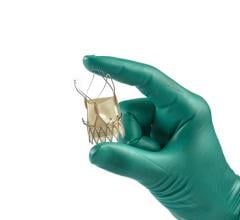June 17, 2015 - Karam Moon, M.D., winner of the DePuy Synthes Cerebrovascular Section Resident/Fellow Award, presented his research, The Myth of Restenosis after Carotid Angioplasy and Stenting, at the American Association of Neurological Surgeons (AANS) annual scientific meeting in May.
Carotid endarterectomy and stenting was shown to have similar safety and efficacy in the Stenting versus Endarterectomy for Treatment of Carotid-Artery Stenosis Trial (CREST). Restenosis rates after endovascular treatment are highly variable in the literature and risk factors for this pathology are poorly understood.
The study's authors reviewed all patients undergoing carotid artery stenting (CAS) between 1995 and 2010. Symptomatic and asymptomatic patients were selected based on North American Symptomatic Carotid Endarterectomy Trial (NASCET) and Asymptomatic Carotid Atherosclerosis Study (ACAS) criteria. Risk factors, indications, rates of technical success, intraoperative and perioperative complications, restenosis (>50 percent) rate and clinical outcomes were evaluated.
A total of 156 patients met inclusion criteria, but 35 were lost to follow-up, leaving 121 patients with 133 vessels treated. Ninety-one (68.4 percent) lesions were symptomatic. Indications for stent placement included patients who were poor surgical candidates, prior endarterectomy, prior radiation, study randomization, acute occlusions, tandem stenosis, high bifurcation and contralateral laryngeal nerve palsy.
Procedures were technically successful in all but one case. Intraoperative and peri-operative stroke occurred in four patients (3 percent). Mean follow-up was 38 months (range one to 204 months). Patients with a prior history of carotid endarterectomy or neck irradiation (hostile-neck) (n=57) comprised 42.9 percent of all vessels treated and were responsible for 15 of 23 restenosis cases, resulting in a significantly higher restenosis rate when compared with primary atherosclerosis lesions (26.3 percent vs. 10.5 percent, P=.017). Five patients (3.8 percent) with restenosis were symptomatic, four of whom were part of the hostile-neck group.
Rates of in-stent restenosis after carotid angioplasty and stenting are low, but differ between patients with atherosclerotic and hostile-neck etiologies. In this large modern series of carotid artery stenting at a high-volume institution, nearly half of lesions treated were hostile-neck carotids, a cohort that is at higher risk for substantial radiographic and symptomatic restenosis. Counseling for patients undergoing CAS should reflect the differences between these distinct pathologies.
For more information: www.aans.org


 October 23, 2024
October 23, 2024 








